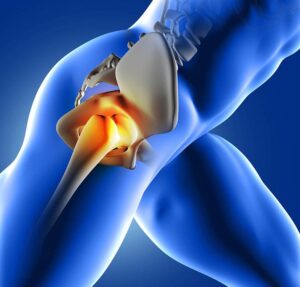Cervical vertigo, also known as cervicogenic dizziness, is a condition that causes dizziness or a sensation of spinning associated with neck pain or stiffness. This condition is often misunderstood and can be challenging to diagnose due to its overlapping symptoms with other types of vertigo and dizziness. Understanding cervical vertigo's symptoms, causes, and treatments is …
What Is Cervical Vertigo: Symptoms, Causes, and Treatments

Cervical vertigo, also known as cervicogenic dizziness, is a condition that causes dizziness or a sensation of spinning associated with neck pain or stiffness. This condition is often misunderstood and can be challenging to diagnose due to its overlapping symptoms with other types of vertigo and dizziness. Understanding cervical vertigo’s symptoms, causes, and treatments is crucial for effective management and relief.
According to the Cleveland Clinic, cervical vertigo affects individuals with neck conditions or injuries, and its symptoms can include dizziness, lightheadedness, and unsteadiness. Environmental factors such as stress and kidney disease can exacerbate these symptoms. Elevated blood pressure is a potential exacerbating factor for symptoms.
This condition is notably treatable, with physical therapy and vestibular rehabilitation exercises significantly improving symptoms for most patients. Complete resolution of symptoms may be achievable with proper management and lifestyle modifications to mitigate risk factors.
What is Cervical Vertigo?
Cervical vertigo is a condition where an individual experiences dizziness or vertigo due to neck problems. It often occurs after a neck injury or in individuals with degenerative changes in the cervical spine. The cervical spine, or neck region, houses nerves and blood vessels that are crucial for maintaining balance and spatial orientation. When these structures are compromised due to injury or degenerative changes, it can lead to the symptoms associated with cervical vertigo.
What are the Symptoms of Cervical Vertigo?
- Dizziness or Vertigo: One of the hallmark symptoms of cervical vertigo is dizziness or a spinning sensation, which can occur suddenly or develop gradually. This dizziness can be exacerbated by specific neck movements or positions.
- Neck Pain or Stiffness: Neck pain or stiffness often accompanies cervical vertigo. The pain can be localized to the neck or radiate to the shoulders and head, contributing to the overall discomfort and imbalance. The primary cervical vertigo symptoms—neck pain and long-lasting dizziness—often go hand in hand. In one study of over 2,000 patients with neck pain, just over 40% also had dizziness.
- Headaches: Frequent headaches are common in individuals with cervical vertigo, often indicating the source of dizziness. These headaches can range from mild to severe and usually coincide with neck pain and dizziness.
- Vision Changes: Vision changes, such as blurred vision or difficulty focusing, can occur with cervical vertigo, often in association with dizziness. These visual disturbances can further contribute to the sensation of dizziness and imbalance.
- Nausea or Vomiting: Nausea and vomiting are common symptoms associated with non-traumatic cervicogenic dizziness or vertigo. These symptoms can significantly impact an individual’s quality of life and daily functioning.
- Difficulty Concentrating: Individuals with cervical vertigo may experience difficulty concentrating or mental fogginess, sometimes indicated by the cervical neck torsion test. This cognitive impairment can make it challenging to perform everyday tasks or work-related activities.
- Unsteadiness or Imbalance: Unsteadiness or a feeling of imbalance is a frequent complaint among cervical vertigo subjects. This symptom can increase the risk of falls and accidents, particularly in older adults.
- Sensitivity to Movement: Increased sensitivity to head and neck movements is a characteristic symptom of cervicogenic vertigo. Even small movements can trigger dizziness and discomfort.
- Fatigue: Chronic fatigue is often reported by individuals with the onset of vertigo. The persistent dizziness and pain can lead to exhaustion and reduced energy levels, which may necessitate exercise therapy.
- Anxiety or Depression: The chronic nature of cervical vertigo symptoms can contribute to anxiety or depression, affecting overall health conditions. The constant worry about triggering dizziness or pain can affect mental health and overall well-being.
What Causes Cervical Vertigo?

- Neck Injury or Trauma: Neck injuries or trauma, such as whiplash from a car accident, are common causes of cervical vertigo. These injuries can damage the structures in the neck that are essential for maintaining balance. The precise incidence of cervical vertigo is controversial, but it is estimated that 20-58% of patients who sustain closed-head injuries or whiplash experience late-onset symptoms of dizziness, vertigo, and disequilibrium.
- Degenerative Disc Disease: Degenerative disc disease, which involves the breakdown of the intervertebral discs in the spine, can contribute to cervical vertigo by affecting the cervical spine’s stability and function.
- Atherosclerosis in the Neck: Atherosclerosis, or the buildup of plaques in the arteries, can reduce blood flow to the brain and inner ear, leading to symptoms of dizziness and vertigo.
- Osteoarthritis: Osteoarthritis, a degenerative joint disease, can affect the cervical spine and contribute to the development of cervical vertigo by causing changes in the neck’s structure and function.
- Herniated or Bulging Discs: Herniated or bulging discs in the cervical spine can compress nerves and blood vessels, leading to symptoms of dizziness and neck pain.
- Arthritis (Cervical Spondylosis): Cervical spondylosis, a type of arthritis affecting the cervical spine, can cause chronic neck pain and dizziness due to degenerative changes in the neck’s joints and discs.
- Inflammation: Inflammation in the cervical spine, whether due to injury or autoimmune conditions, can affect the nerves and blood vessels that regulate balance and spatial orientation, potentially impacting individuals with heart diseases.
- Cervical Muscle Spasms: Muscle spasms in the neck can cause pain and restrict movement, contributing to the symptoms of cervical vertigo.
- Poor Posture: Poor posture, particularly prolonged periods of looking down or forward, can strain the cervical spine and lead to symptoms of cervical vertigo over time.
- Whiplash Injuries: Whiplash injuries, often resulting from car accidents, can damage the soft tissues in the neck and disrupt the normal functioning of the cervical spine, leading to vertigo.
How is Cervical Vertigo Diagnosed?
Diagnosing cervical vertigo involves a thorough medical history, physical examination, and diagnostic tests to rule out other potential causes, making it a diagnosis of exclusion. A healthcare provider will assess the patient’s neck mobility, check for signs of nerve compression, and evaluate the patient’s balance and coordination. Imaging studies, such as X-rays, MRI, or CT scans, may be used to visualize the cervical spine and identify any structural abnormalities. In some cases, vestibular testing may be conducted to assess the inner ear’s function and rule out other causes of dizziness.
Who Does Cervical Vertigo Affect?
- Older Adults: Cervical vertigo is more common in older adults due to the increased prevalence of degenerative changes in the cervical spine with age.
- Individuals with Neck Injuries or Trauma: Those who have sustained neck injuries or trauma, such as whiplash, are at higher risk for developing cervical vertigo.
- Individuals with Neck Arthritis or Spondylosis: Individuals with cervical spondylosis or other forms of neck arthritis are more likely to experience cervical vertigo due to degenerative changes in the spine.
- Individuals with Poor Posture or Neck Muscle Imbalances: Poor posture and neck muscle imbalances can strain the cervical spine and increase the risk of cervical vertigo.
- Individuals with Certain Neurological Conditions: Certain neurological conditions that affect the cervical spine or the nerves and blood vessels in the neck can also contribute to the development of cervical vertigo.
What are the Treatments for Cervical Vertigo?
Treatment for cervical vertigo typically involves a combination of neck exercises and physical therapy.
Neck Exercises and Physical Therapy
- Gentle Neck Stretches and Range of Motion Exercises: Performing gentle neck stretches and range of motion exercises, sometimes coupled with muscle relaxants, can help improve flexibility and reduce stiffness, alleviating some symptoms of cervical vertigo.
- Strengthening Exercises for the Neck and Shoulder Muscles: Strengthening exercises targeting the neck and shoulder muscles can improve stability and support for the cervical spine, reducing vertigo symptoms.
- Manual Therapy: Manual therapy techniques, such as massage and joint mobilization, can relieve muscle tension and improve neck mobility in cervical spine instability.
Medications
- Over-the-counter Anti-Inflammatory Drugs: Over-the-counter anti-inflammatory drugs, such as ibuprofen, can help reduce inflammation and relieve neck pain associated with cervical vertigo.
- Prescription Medications: In some cases, prescription medications, such as antihistamines or anti-nausea drugs, may be necessary to manage symptoms of dizziness and nausea during cervical spine realignment.
Lifestyle Changes
- Maintaining Good Posture: Maintaining good posture and avoiding activities that strain the neck can help prevent and manage cervical vertigo symptoms.
- Using a Neck Collar or Brace: Using a neck collar or brace can provide support to the neck during activities and reduce strain on the cervical spine, as shown by digital motion X-ray.
- Applying Heat or Cold Therapy: Applying heat or cold therapy to the neck can help relieve pain and reduce inflammation.
Chiropractic or Osteopathic Adjustments
Chiropractic or osteopathic adjustments involve spinal manipulation techniques to improve neck mobility and reduce symptoms of the body in motion.
- Spinal manipulation techniques: Spinal manipulation techniques involve the application of controlled force to a spinal joint, aiming to improve the joint’s alignment and functionality. This practice is foundational in chiropractic and osteopathic medicine, targeting to relieve pain, enhance physical functioning, and support the body’s natural ability to heal itself.
Vestibular Rehabilitation

Vestibular rehabilitation involves exercises and activities designed to retrain the brain and improve balance and spatial orientation.
- Exercises and activities to retain the brain: Exercises and activities aimed at retraining the brain are central to vestibular rehabilitation, with the goal of mitigating balance issues and enhancing spatial orientation. These therapeutic exercises can vary widely, including head and eye movements that help recondition the brain’s processing of spatial information, as well as balance training that involves standing and moving on various surfaces or in different environments to challenge and improve one’s balance.
Surgery (in Rare, Severe Cases)
In rare and severe cases, surgery may be necessary to address underlying structural issues in the cervical spine that are causing vertigo symptoms, especially in patients with chronic conditions.
Conclusion
Cervical vertigo is a complex condition that requires a comprehensive approach to diagnosis and treatment, potentially at a healthcare facility. By understanding the symptoms, causes, and available treatments, individuals can take proactive steps to manage their condition and improve their quality of life. If you or someone you know is experiencing symptoms of cervical vertigo, it is essential to request an appointment with a healthcare provider for proper diagnosis and treatment. With appropriate medical care, including physical therapy and lifestyle modifications, most patients can experience significant relief from their symptoms.”
By placing the call to action here, it directly encourages readers to seek professional help if needed while summarizing the importance of understanding and managing the condition.
FAQs
What Triggers Cervical Vertigo?
Cervical vertigo can be triggered by neck movements, poor posture, neck injuries, or underlying conditions such as cervical spondylosis or degenerative disc disease.
How Long Does It Take for Cervical Vertigo to Go Away?
The severity and duration of cervical vertigo can vary depending on the underlying cause and the effectiveness of treatment. With appropriate treatment, many individuals experience significant improvement within a few weeks to months.
Can Walking Help Cervical Vertigo?
Yes, walking can help improve balance and overall physical condition, which can be beneficial for individuals with cervical vertigo, especially those with substance use disorders. However, it is essential to consult with a healthcare provider before starting any exercise program, particularly in cases of arterial dysfunction.
Dr. Adam Babcock PT, DPT
“We Help Active Adults Quickly Recover From Pain Or Injury So They Can Stay Active, Get Back To What They Love To Do, and Do It For Decades”






